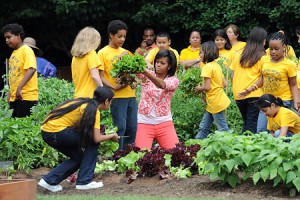So you have been working hard in your garden weeding and fending off the pests and it’s now time to enjoy the fruits of your labour. Here are a few tips for harvesting your bounty and saving your seeds.
Harvesting
The biggest question here is: “How do I know when to harvest?” Bigger is not always better: many vegetables taste better and are more tender when they are smaller. If this is your first time gardening, you may have trouble with this concept. It can be tempting to watch your vegetables get as big as they possibly can. If you take this road, be prepared for not only tough produce but also to share your crop with insects and other garden pests. To help you make that decision of when to harvest, check out this harvesting guide put together by the University of Indiana Extension. Cornell University also has a handy downloadable guide. As you gain experience, you will be able to tell when to harvest by inspecting your crop and sampling the vegetables as they mature. Read more here





